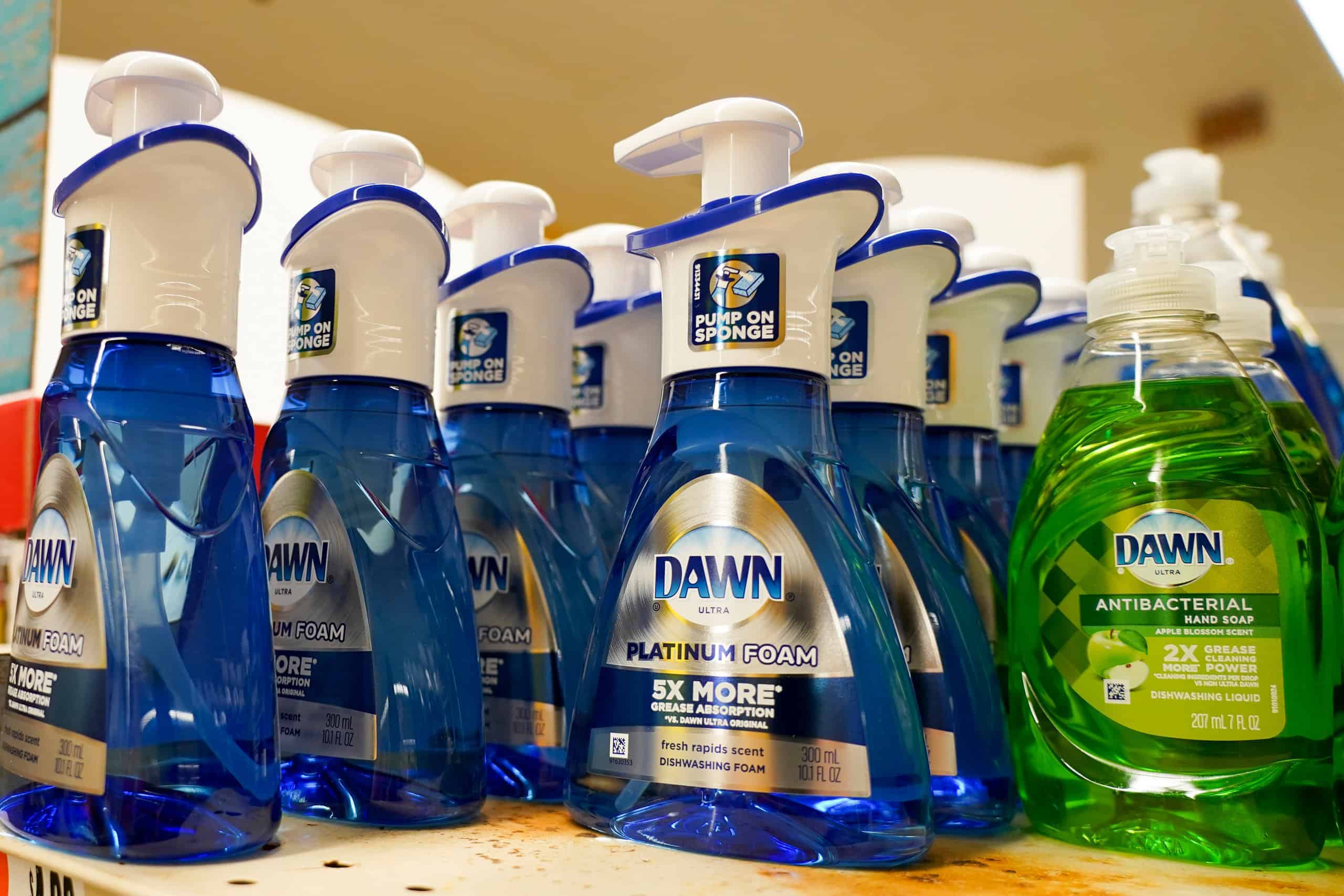There are quite a few common household products that we just grab without thinking about a time when they weren’t around. While we watch products improve over time, do we really understand how they were developed or how long they’ve been around? Are there things we take for granted without thinking about the hard work, research, and science that went into them? When we coat our lips in Chapstick or condition our hair, do we ever wonder where these products started?
Many soap-based products were used centuries ago, but in much different forms. Over time, they adapted as cultures changed and hygiene became more important. Then, concerns arose about how some chemicals used in these products affected the environment. Others wondered how these chemicals affected the human body. While we have a basic understanding of where these products came from, we’re not sure where they will go. Research is constantly done on most of them to ensure they are the healthiest, most effective option.
For everything from cooking spray to shampoo, keep reading to find out where they came from and how old they are.
Sunscreen

©NadyaEugene/Shutterstock.com
We take sunscreen for granted whenever we head out the door for a picnic or swimming date. So where did it come from and who determined it was important?
Humans have a long history dating back centuries to show how our skin has evolved over time in terms of lightness and darkness. In 1798, skin sensitivity to light was discovered by the father of modern dermatology, Robert Willan. UV radiation was then discovered in 1801. Over the next 100+ years, several scientists continue research on the sun’s effect on the skin.
The first sign that the sun could cause a form of skin cancer came in 1896 when a German doctor made the connection between the two. He defined skin cancer changes as sailor’s skin carcinoma. The first sunscreen was developed in 1910, but celebrities continued to popularize tan skin and companies worked on tanning oil as well as sunscreen. The United States Food and Drug Administration started to regulate the market in 1978, at the same time tanning beds became popular.
In 2007, the association between melanoma and tanning beds was confirmed by the International Agency for Research on Cancer, but fortunately, the 1990s ushered in an era where consumers were conscious of terms like SPF and UVB. Sunscreen is such a common household item that we often forget it took more than a century to develop, with the first official product hitting the market in 1928.
Toothpaste

Toothpaste dates back to ancient times, when the Romans and Greeks used oyster shells, crushed bones, charcoal, and bark to clean their teeth. The Indians and Chinese used ginseng, mint, and salt. Interestingly enough, Egyptians used a mix of pepper, iris, rock salt, and mint as early as 5000 BC.
In 1800, the product was simply a powder with chalk or soap. The English added betel net to the mixture, and in 1824, a dentist added soap to dental paste. The next step was adding chalk in the 1850s, and then Colgate exploded on the market with jarred toothpaste in 1873. The first collapsible toothpaste tube was used in 1892.
Manufacturers included fluoride in toothpaste for cavity prevention in 1914, and sodium lauryl sulfate replaced soap in 1945. Eleven years later, Crest mass-marketed Fluoridated toothpaste. You may be surprised to learn that NASA created the first edible toothpaste, and whitening agents were added in 1989.
Today’s toothpaste consists of fluoride, water, abrasives, and detergents, as well as breath-freshening properties and different flavors.
Laundry Detergent

©Bowonpat Sakaew/Shutterstock.com
Washing clothes didn’t just start when machines and soap were discovered. The process has been around since 2800 BC when researchers found the first evidence of soap-like materials in Babylon. At that time, soap was made of rendered animal ashes and fat. It stayed that way for a while, and there is proof that ancient Egyptians did the same.
The washing machine made its first appearance in the 1800s during the Industrial Revolution, changing how soap was used. The original washing machine was designed to agitate dirt off items, and soap was still made from animal fat and ashes. Soap stayed the same until around 1916 when there was a shortage of vegetable fats and oils, as well as animals to use in making soap during World War I.
This forced chemists to work with other raw materials that are today known as detergents. Fabrics, bleaches, powder detergent, and liquid detergent became popular in the 1950s, and stain removers joined the club in the 60s. Since the early 90s, we’ve seen green-friendly products, biodegradable cleaners, color-safe bleach, laundry sheets, and detergent pods have entered the market.
Shampoo

©TanyaKim/Shutterstock.com
In 4,000 BC, bathing and hairstyling were known as luxuries reserved only for the most popular in society. It wasn’t until about 1,000 years later that it became a widespread belief that grooming separated humans from other animals. Egyptians first harvested plants to make essential oils combined with vegetable and animal oils to create a soap-like material for washing centuries later.
In India in the 1800s, traders discovered a body and hair massage and called it champoo. The word shampoo eventually came from “champing” in Europe and was first developed by a Berlin chemist. Two years later, conditioner was created to soften beards and mustaches. In 1908, the New York Times published the rules of shampooing, advising people to wash, comb, and brush their hair out at night.
In 1914, the first shampoo commercial was released, and one of the premier liquid shampoos was launched by Schwarzkopf 13 years later. Over the next century, the substance is refined to last longer, repair hair, and match different hair types. While shampoo companies constantly try to improve the product, detergent remains a main ingredient, so it’s hard to improve it too much.
Non-Stick Cooking Spray

©Alexander Chembarisov/Shutterstock.com
This is one that was invented within the last 100 years. In 1959, Leon Rubin and Arthur Meyerhoff created PAM as a healthier option for liquid oil, margarine, or butter. In 1992, the company changed the formula and added canola oil to improve the taste and reduce saturated fats. Fun fact: PAM stands for “Product of Arthur Meyerhoffer.”
Baking spray with real flour was invented in 2003 and a year later a version for grilling was released. PAM professional for high heat applications joined the other products in 2007. While the patent for the product was issued in 1957, there are many generic options today, and many consumers opt for olive oil spray as a healthier alternative.
Chapstick

©777Anna777/Shutterstock.com
While Chapstick is a specific brand, it’s also a generic name for a lip balm product. Invented by a pharmacological thinker and physician in the early 1880s, it was sold locally and was a bit of a flop. A little over 40 years later, after someone spent five dollars to buy the rights to the product, his wife melted the ingredients in her kitchen, let them cool, and then cut them into sticks. Her last name was Morton and the money they made eventually founded the Morton Manufacturing Corporation.
The familiar logo was designed in 1935 and is still used today. The product was sold again in 1963, then after several acquisitions and moves from American Home Products to Pfizer, eventually landed as part of the Suave Brands Co. in 2024. Chapstick now includes sunscreen in some situations and comes in many different flavors.
The company has paired up with several charitable corporations to raise money for breast cancer awareness and has a line for young teens. Familiar spokespeople include Diana Golden, Julius Irving, and Suzy Chaffee.
The image featured at the top of this post is ©Ron Adar/Shutterstock.com.
